No products in the cart.
Hair Care Guide
Swimming with Braids: Protection & Style
This book opens all the knowledge on swimming with braids. With Jen Hair, let’s learn all the secrets to maintain their health and style.
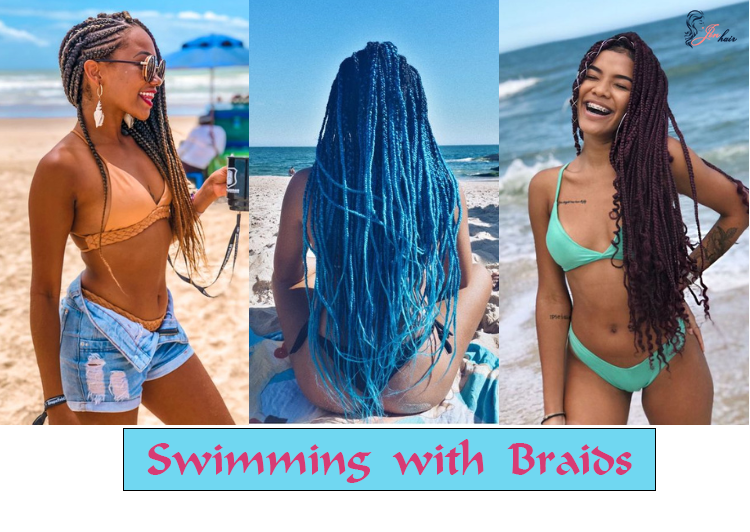
Though you are excited for summer activities, are you unsure about how visiting a beach or pool will impact your braids? Rest assured! This all-around guide will cover all you need to know about swimming with braids.
Many braid enthusiasts worry that swimming would ruin their designs, cause dryness, or fade their color. All summer, we will walk you through how to maintain your braids safe, healthy, and looking fantastic.
Whether your hair is worn in cornrows, box braids, or wavy braids, we offer advice for all braid types. So get ready with your swimsuit and let Jen Hair’s advice help you to care for your braids!
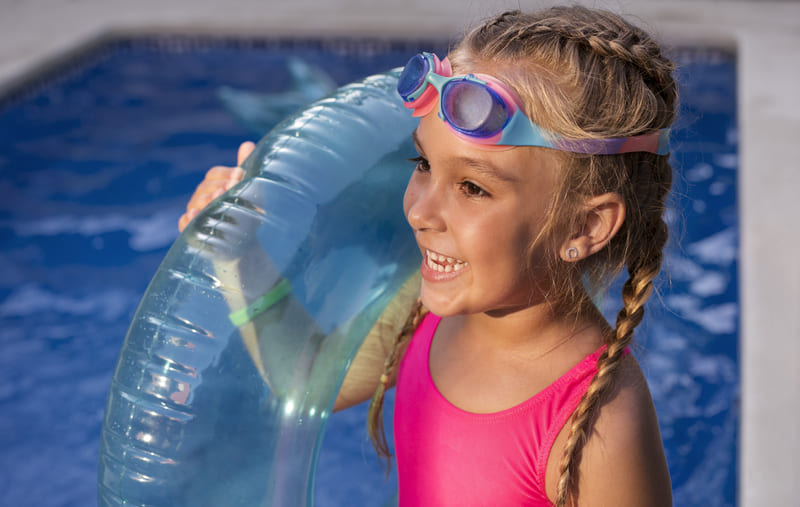
Can I Swim With Braids?
You can obviously swim with hair on. Actually, whether you’re just visiting the pool for fun or completing several laps, braids can make swimming much easier.
Why Is It Possible?
Your hair is like a safe cover when braided. Since they shield it from chemicals, sea, and the sun, you have no concern about harm while swimming. Moreover, braids are really easy to maintain. While loose hair might become knotted and dirty, braids remain neat and make swimming fun. The best feature to know when swimming with braids is you will be sure to locate the correct braid type for you from the several available ones. Everybody has a braid type, regardless of their preferred style—from elegant twists to basic knots to something in between.
What Could Go Wrong If You Swim With Braids On?
Remember it can break and get dry. If you don’t thoroughly dry braids after swimming, they might also cling on to water even if they protect your hair. Your hair can dry out and break in the end from this. To maintain your braids’ health, rinse and dry them well after swimming.
One also has to consider when swimming with braids is to scalp itchiness. Tight knots can be uncomfortable and aggravate the skin when your hair has been in water for extended period of time. You might have swelling, burning, and, in worse circumstances, hair loss. Making sure your braids are not too tight can help you to remain calm and free from these issues.
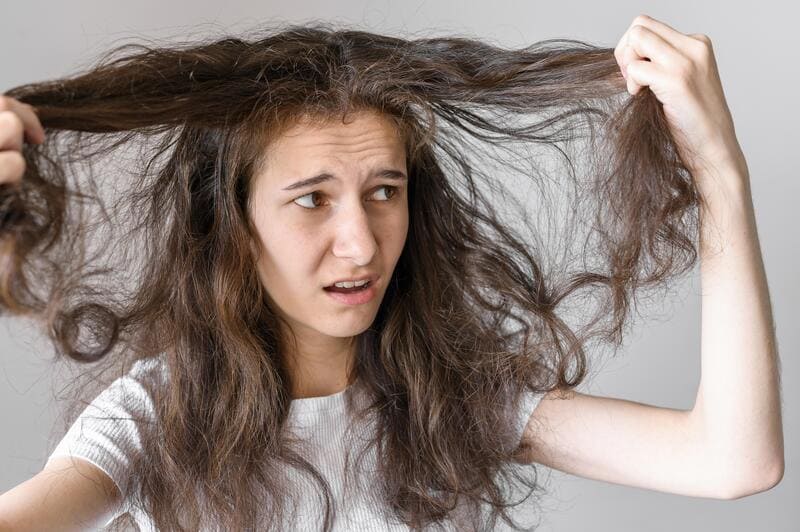
One can also adjust balance and weight. Your braids may become heavy as they wet. Long or thick braids could influence your swimming and floating technique. If you’re not a good swimmer, notice how your braids feel in the water and adjust your swimming technique if necessary.
Finally, although braids are typically easy to maintain, swimming might harm them. If you frequent the beach or pool, you might have to touch up your braids more frequently to keep them looking good.
What Are The Best Braid Styles For Swimming?
Are you ready to mix utility with style for your aquatic travels? You only need to look at these best braid designs when swimming with braids.
Box Braids:
More than just a style statement, box braids save your hair in the water. Box braids, which consist of separate hair braided square portions from the scalp down, form a barrier against chlorine, saltwater, and dangerous UV rays. Their adaptability also guarantees several styling possibilities, so ensuring you look amazing both inside and outside the pool.

Ponytail Braids:
The ponytail braid results from simplicity meeting style. Keeping all of your hair securely in a ponytail at the rear or top of your head, this elegant and stylish braid keeps it out of the way as you swim. Bid farewell to matted hair and welcome easy elegance.

Dutch Braids:
Dutch braids will help you if your desired is durability. These braids produce a raised look that preserves them even after intense swimming sessions by crossing the hair strands under rather than above. Their close-to–the-scalp design and tight weave guarantee best protection against water damage, therefore enabling you to swim with confidence.

Cornrows:
Not only a haircut, cornrows are the friend of swimmers. These tightly spun braids minimize frizz and provide excellent defense against water damage by laying flat on the scalp. They also are a go-to pick for poolside glam since their adaptability in design lets one create countless style options.
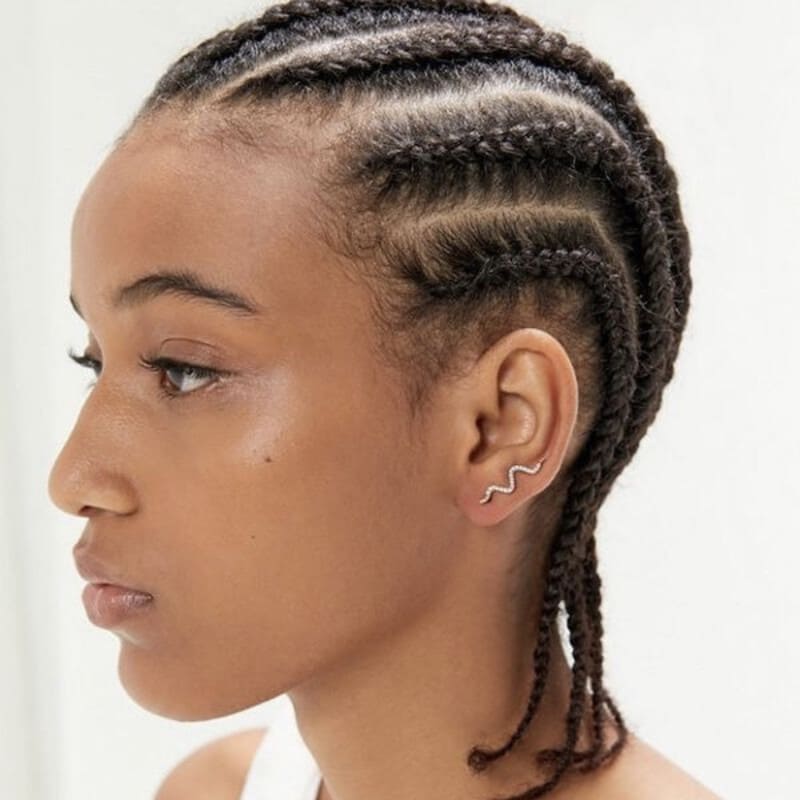
Ghana Braids:
Want some flair and volume to your beach attire? We highly suggest Ghana swimming with braids. Often called feed-in braids, these braids give volume and flair while protecting your hair. Their close-to–the-scalp architecture and complex patterns guarantee low water penetration, so preserving the health and color of your hair.
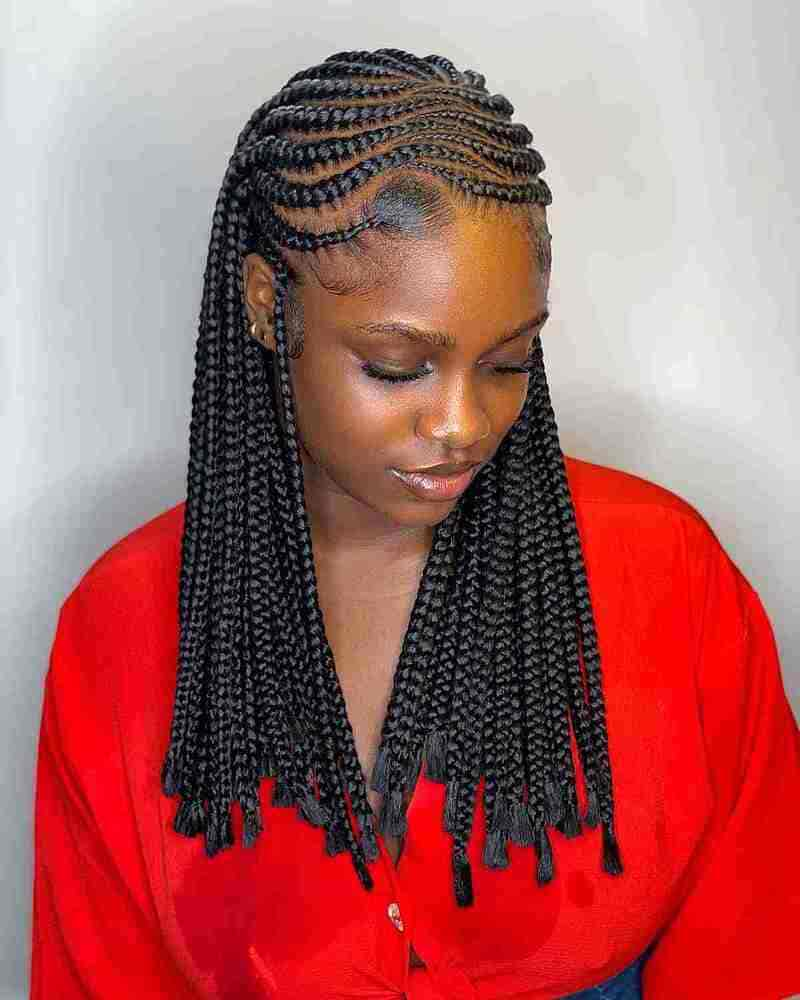
Braided Bun:
Swim with the braided bun keeping your hair off your neck and face. Whether you’re lazing poolside or swimming laps, this traditional hairstyle guarantees you look neat and put-together by twisting or braiding the hair before wrapping it into a bun shape.

Senegalese Twists:
Senegalese twists, light-weight and flexible, provide great protection without dragging down your hair. These twists customize to fit your swim style by twisting extensions around your natural hair to create lengthy, rope-like twists.
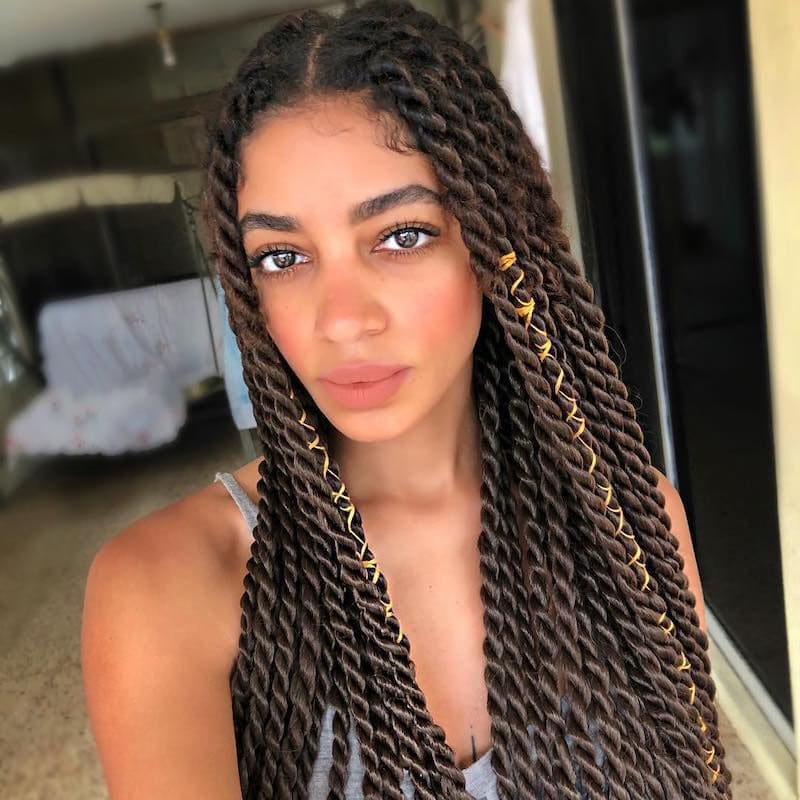
How To Go Swimming With Braids?
Choosing the Right Braids
Not every braid fits swimming. Choose Ghana braid, smaller or medium-sized box braids, cornrows tied into a bun, or any style that will work with the water.
Make sure your braid extensions’ ends are well bound. Rubber bands, a hot water plunge, or a light burn will help you to keep them in place.
If you are braiding your own hair without extensions, tightly tie off each braid at the ends using rubber bands or bobby pins or clips when swimming with braids. This keeps your style from disintegrating even after a day of splashing.
Preparation
Treat your hair well before swim day. Night before, massage coconut oil onto your scalp and hair. Acting as a natural sunscreen, coconut oil creates a protective layer on your hair that adds strength. Bring some coconut oil to protect your hair from the sun’s rays if you intend to remain at the beach following swim-through.
Shampoo and Conditioner
Before swimming, don’t forget to wet your hair. Doing so helps minimize the amount of chlorine or salt that your hair absorbs. After wetting your hair, apply conditioner for added protection and moisture. Once you’re out of the pool, avoid wringing your hair, as it can cause breakage. Instead, softly squeeze out any extra water.
When showering, rinse your hair with water and then use a potent shampoo like clarifying or anti-residue shampoo to eliminate chlorine buildup from your hair and scalp.

Before and After Rinsing
Dampen your hair with fresh, light water before diving into the pool. By helping your hair and extensions absorb up less chlorine or saltwater, you assist prevent possible damage. Use the suitable shampoo and rinse your hair one more to remove any residual chemicals following swimming.
Hair Protection Essentials
Think about making investments in protective hair treatments such serums, oils meant especially for swimmers, or leave-in conditioners. These products guarantee that your hair stays nourished and moistened by adding still another layer of protection against chlorine or saltwater. Choose formulations loaded with UV protection factor to shield your scalp and hair from sun damage if you will be under the sun when swimming with braids.
Consider a Swim Cap
Consider swimming under a swim cap to protect your braids. If it keeps your style, investing in one made for braids is worth even if they cost more than ordinary swim hats.

Scrub and Hydrate Your Scalp
Pool chlorine can irritate or cause itching on your scalp. To fight this, gently clean your scalp to eliminate the chlorine after careful rinsing. We stress “gently” here since overly vigorous scrubbing can disturb your roots and produce tiny wounds on your scalp or frizz. Treat your clean scalp to some moisturizing love with your preferred calming oil. You choose from vitamin E oil, coconut oil, jojoba oil, olive oil.
Ensure Your Braids Are Thoroughly Dry
Although nobody likes moldy, mildewed braids, if braids get wet this is a regular problem. Just one to two days after swimming, mold and mildew can set in; prevention is easy. After swimming with braids, here’s how to make sure your braids dry correctly:
- Allow them to air dry. Once out of the pool, carefully squeeze extra water out and let your braids air dry naturally. Steer clear of ponytails and hat wearing since these might retain moisture in your hair.
- Use a hooded drier. Using a hooded drier can help your braids dry fastest and most effectively. Sit under the dryer until your braids, piled on top of your head, are totally dry. Usually taking thirty minutes, thicker or longer braids could require more time.
- Try not styling your braids until they are absolutely dry. Styling while they’re drying—such as putting them in a ponytail or space buns—can trap moisture and promote mildew and mold growth.
FAQs:
Does Pool Water Mess Up Braids?
Indeed, by inducing dryness, brittleness, frizz, tangling, discolouration, and damage, pool water could perhaps influence braiding. To assist reduce these effects, though, one should rinse with clean water before swimming and carefully cleanse and condition afterwards.
Can I Swim With Curly Braids?
Indeed, swimming with braids is usually OK as the braids themselves offer some defense against your hair damage. The braids help to reduce direct contact to chlorine or saltwater by separating your natural hair from the pool water. Furthermore, curly braids are frequently created with synthetic or natural hair extensions less likely to be damaged by water than untreated genuine hair. Swimming with curly braids should not seriously damage your hairdo as long as you follow simple guidelines like avoiding too aggressive manipulation or shaping when your hair is wet.
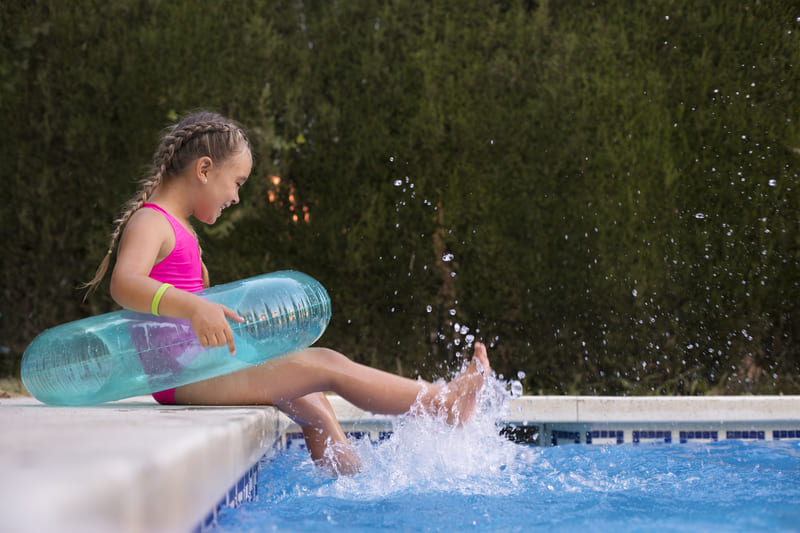
Is Chlorine Bad For Braids?
Indeed, mostly because of its drying characteristics, chlorine can possibly have harmful effects on braids. Chlorinated water causes the chlorine to take moisture from the hair, thereby causing dryness and possible damage to braids. Over time, this can cause the braids to grow brittle, frizzy, or breakable when swimming with braids. Furthermore, especially if the braids are light in hue, chlorine could discolor them.
Can You Go Swimming With Fake Hair Braids?
You can certainly go swimming with artificial hair braids, but you should be careful not to harm them. Generally speaking, synthetic or human hair extensions—as used in fake hair braids—are more resistant to water damage than untreated genuine hair. Still, chlorine or saltwater can have certain detrimental effects such tangling and hair drying out.
Final Thoughts
All set to confidently sport your braids poolside? You can enjoy swimming with braids by learning correct care and selecting the appropriate braid style. Get in touch with Jen Hair salon right now to realize your poolside look!
Reccomendations:

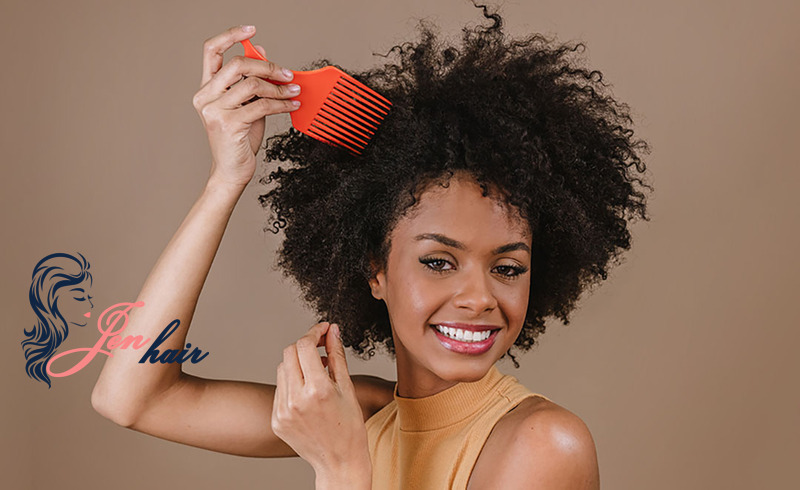 Guide Cornrows With Side Part The Best For Beginner
Guide Cornrows With Side Part The Best For Beginner Ultimate Guide: Headband with Hair Attached (Best Styles for 2025)
Ultimate Guide: Headband with Hair Attached (Best Styles for 2025)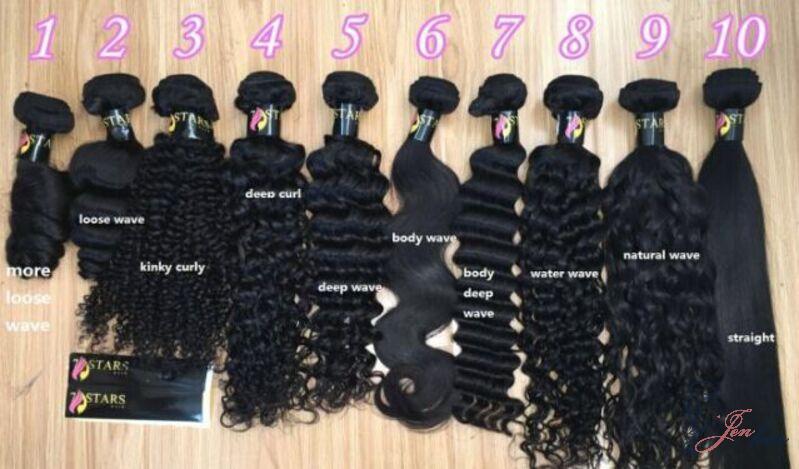 Top 7 Premium Human Hair Clip In Extensions For Black Hair
Top 7 Premium Human Hair Clip In Extensions For Black Hair
